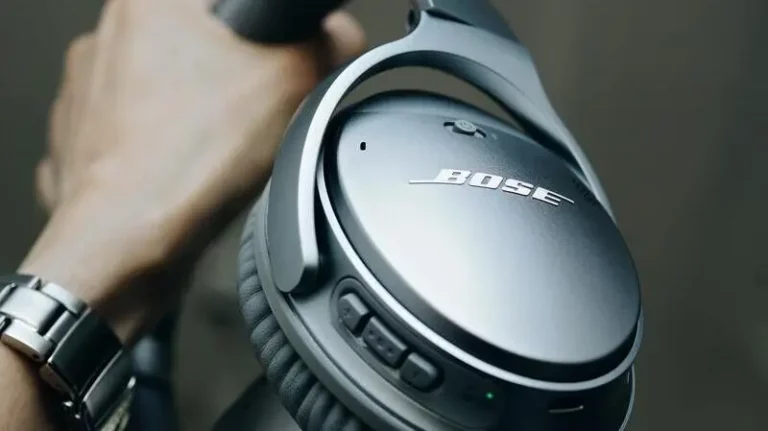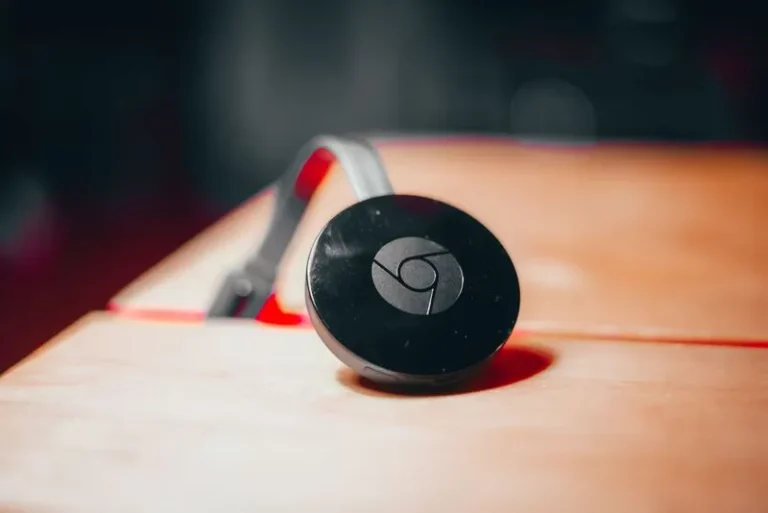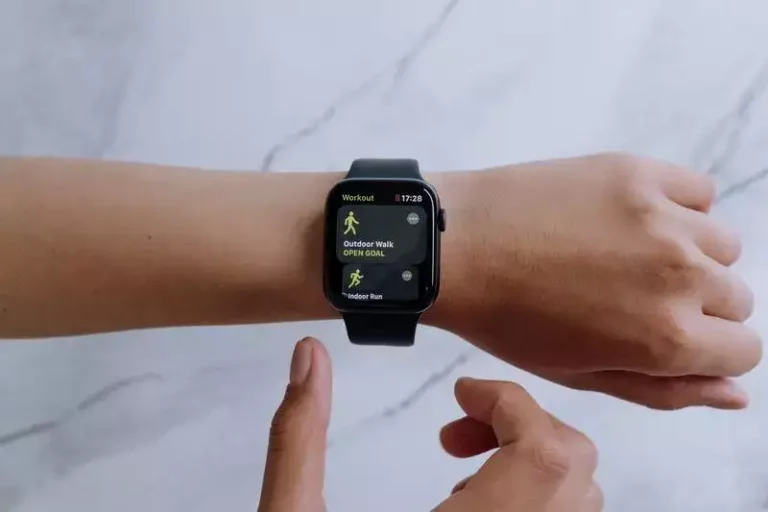Can Bone Conduction Headphones help hearing impaired? (Yes)
This site contains affiliate links to products, and we may receive a commission for purchases made through these links.
Bone Conduction Headphones use vibrations to send sound waves through your bones around your ear and into your inner ear.
They are an excellent alternative if you suffer from single-sided deafness, conductive hearing impairment, or use in-ear hearing aids.
These earbuds bypass the issues with the outer ear, middle ear or ossicles, and the eardrum. Thus, users with hearing problems in those ear parts can listen to music without issues.
Yet, these headphones will not work for people with auditory nerve or inner ear impairments.
In this article, I will explain how this device is working and go through questions people have asked about it. I hope this will help you if you are considering buying a pair. Let’s dive in.
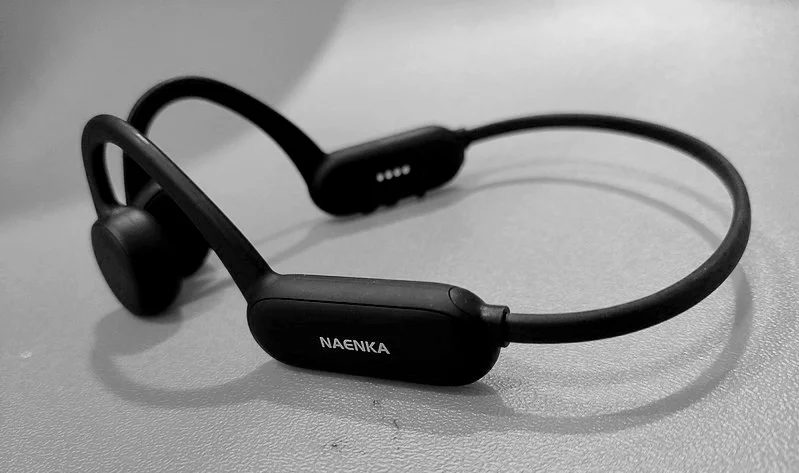
What is Bone Conduction Technology?
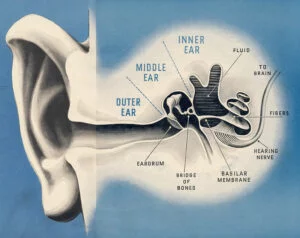 This technology is a sound transmission that happens all day long. Let’s explain.
This technology is a sound transmission that happens all day long. Let’s explain.
Our ear picks up sounds in two different ways; through the air and bones.
The majority of the sound is picked up by our eardrums through the air, and converts the soundwaves to vibrations and transmits them to our inner ear.
The rest of the sound is coming from vibrations picked up by our bones, which are bypassing our eardrums and are heard directly by our inner ear.
People with hearing impairment can use the technology to trace and hear certain sounds. This is also the science behind why you can still hear yourself if you put your hands in front of your ears and start talking.
Therefore, body bones, especially those near the ear, play an important role in receiving sound signals through bone conduction technology.
How do Bone Conduction Headphones work?
The design of the bone conduction headphones are using the skull, jawbones, and all the nearby ear bones to send the sound signal directly to the inner ear. The headphones are also sending the sound waves they produce through the air, but this is not the main purpose.
To send the sound signal through the bones, the earbuds have to meet certain criteria.
The earphones generate vibrations to produce an understandable signal to the inner ear. Music is designed with variations, so the earbuds that produce the audio have to filter, and determine the appropriate wave equivalent with the inner ear’s ability to hear.
This is often referred to as the sound signature or the earbud.
As the inner ear (Cochlea) has different parts that hear and interpret sound signals differently, the vibrations created by these headphones are also different.
This is why it’s important to consider the earbud’s sound signature before you buy.
The jaws, skull, and cheekbones are mostly the bones used by these devices to send information to the inner ear.
Normal headphones have to use the ‘push air method’ to reach the sound signal, which travels directly to the eardrum.
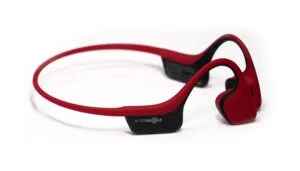
Are Bone Conduction Headphones only made for deaf and hearing impaired?
No, they can be used by anyone that prefers the advantages these headphones have, like the ability to hear your surroundings.
If you want to be able to listen to music while you still hear everything that is going on around you, these headphones are perfect.
Can Bone Conduction Headphones cause hearing loss? (Are they safe?)
These headphones will not cause hearing loss directly but can be unsafe if used with unsafe listening practices.
Statistics from the World Health Organization show that “more than 1 billion young adults are at risk of permanent, avoidable hearing loss due to unsafe listening practices”.
The risk of hearing loss is highly dependent on the user of the headphones which is not any different than other types of headphones.
One of the most common reasons for hearing loss comes from loud noises over time. According to Centers for Disease Control And Prevention (CDC), noise above 70 dB over a prolonged period of time may start to damage your hearing.
For comparison, a motorcycle engine is running at around 95 dB, and a normal conversation is around 60dB. So if you are listening to music all day long with the volume too loud you may have problems with your hearing later in life.
When considering if Bone Conduction Headphones are safe, we have to address one big advantage these headphones have.
They will not cover your ears and block the sounds of your surroundings like traffic or someone shouting an important message. Compared to ordinary headphones or earbuds you will be more aware and hence safer.
Do Bone Conduction Headphones leak sound?
Although most of the sound comes from vibrations directly to your inner ear, these devices do send sound waves through the air, and they will leak sound to the environment.
Sound leek or sound bleed was a big problem when these types of headphones were released, and the manufacturers realized that they had to do some improvements on this part.
Newer models from the most well-known manufacturers have improved a lot, but there will be differences between the brands.
If you are in quiet surroundings, people around you will hear sounds from your headphones.
Comparing Bone Conduction Headphones with ordinary earbuds (not IEM) like the Apple Airpods, you will experience more sound leek. This is because of the placing of the device outside your head. Normal earbuds will have some blocking effect from resting outside of your ear canal.
But as long as you’re not in a super quiet place, like a library, and you play music with moderate volume, you will most likely be fine.
Are Bone Conduction Headphones good for running, cycling, and sleeping?

If you like music but do not like the feeling of not hearing approaching vehicles, cyclists, or runners, Bone Conduction Headphones can work wonders since they are open ears and don’t block out your surroundings.
Normally they are very comfortable to wear while doing any kind of workout, but it’s important that you have the right size and fit. I highly recommend going to a physical store and actually try them on before deciding. Having a perfect fit might even help you perform better on the workout.
Some of the top models have an IP rating as high as IP67, which means that they can withstand both sweats, rainshower and you can even swim with them.
If you want to listen to music or white noise when going to sleep, this device might help you out. They are pretty flat in the build and will not push against your ear if you want to sleep on your side.
The only disadvantage is that if you are moving a lot when in sleep there is a risk that you might lose the device, or even break it.
Can you wear Bone Conduction Headphones while driving?
Yes, the headphones will not block or plug your ears, so you can still pay attention to what is going on in the traffic, and stay safe while driving.
If you want to use them while riding a motorbike you might want to consider using earplugs with the headphones to block out wind and the sound of your bike.
Do Bone Conduction Headphones work with earplugs?
Yes, you can use earplugs at the same time as using headphones. I fact, Aftershockz has multiple products that come with earplugs in the box. You can check out some of their products here.
Although one of the main perks of using Bone Conduction Headphones is to be aware of your surroundings, using earplugs does have some benefits.
The earplugs will help you block sound from your environment as it’s supposed to, and you will still hear the sound loud and clear from the headphones.
Regarding the sound quality, it also depends on what kind of earplugs you are using (silicone, foam, or reusable) and how they seal the ear canal. With silicone earplugs, you will seal the ear canal entrance which gives a louder sound, and you will have a better experience on the lower notes like the bass.
Examples of when earplugs will be useful are when running a lawnmower, studying in a place with people talking, or when commuting.
Are Bone Conduction Headphones OSHA approved?
They are not approved directly by OSHA (Occupational Safety and Health Administration), but they don’t have any regulation that specifically prohibits the use of headphones.
Some manufacturers claim that their products are 100% OHSA compliant but that is actually not all true.
OSHA states that they do not register, certify, approve, or otherwise endorse commercial or private sector entities, products, or services. Therefore, any such claims by a manufacturer are misleading.
Although OSHA doesn’t prohibit the use of headphones, you should take some precautions.
OSHA issued a general warning about the use of headphones in September 2019. Here they emphasized the importance of providing safety from other hazards apart from noise where headphones may have an impact.
The agency stated that; “Listening to music may produce a safety hazard by masking environmental sounds that need to be heard, especially on active construction sites where attention to moving equipment, heavy machinery, vehicle traffic, and safety warning signals may be compromised”.
So if you work on a construction site where earplugs are a requirement I would be careful of using headphones at all.
As written in the section above, earplugs will block some of the ambient sounds and enhance the music in your ear. This might block important sounds you are supposed to hear on a construction site.
According to OSHA, struck-by hazards are one of the four leading causes of death in construction. So make sure you don’t put yourself at any risk.
What is OSHA?
OSHA stands for the Occupational Safety and Health Administration and is part of the United States Department of Labor.
Their mission is according to OSHA “to ensure safe and healthful working conditions for workers by setting and enforcing standards and by providing training, outreach, education, and assistance.
Can you wear Bone Conduction Headphones with glasses?
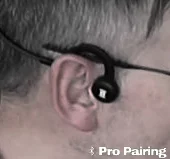
Yes, you can wear glasses at the same time.
It seems like the most common way is to put on the headphones first and then fit the glasses either outside or inside of the frame.
You need to try what fits best but when you find the correct fit you might experience that the glasses push the headphones tighter to your head which actually makes the sound a little better.
I ran a poll to get a better understanding of what kind of experiences people actually had using these headphones with glasses.
A common understanding seems to be that you might feel a little pressure when using glasses, but not more than when using ordinary over-ear headphones.
And if they get a little uncomfortable, just adjust the glasses a bit and it’s good to go.
“no problems wearing them and quite often forget that I have them on when they are not playing”
Anonymous
Can I get Bone Conduction Headphones for kids?
Yes, you can get headphones with this technology for kids.
In addition to the fit and comfort, one of the most important features you need to look for when buying headphones for kids is a volume limit. According to the World Health Organization, headphones for kids should not exceed 85 dB max volume.
So if you are wondering what kind is right for your kid you can look for examples like this one from Amazon.
Does binaural audio still work when listening via a bone conduction headset?
It is possible to experience the binaural effect while using these headphones. You can still feel the tingle of the razor moving across the back of your head.
The only downside with using Bone Conduction for binaural listening is that because your ears are still open, you can hear the surrounding sounds, which can impact the immersive feel you can get while listening with earbuds.
What are the best manufacturer of Bone Conduction Headphones?
The manufacturer with the most known models is AfterShokz. They have multiple models scoring very high in reviews where the AfterShokz Aeropex is their top model. You can check them out on Amazon here.
Other brands with good models are Vidonn and Tayogo:
Vidonn F3 is a very lightweight headphone, perfect for working out.
Tayogo are a Chinese brand that is a little cheaper, but some of the most worthy at their price.
Final Thoughts
Bone Conduction Headphones enable those with issues with the outer ear, middle ear or ossicles, and the eardrum, to enjoy the wonderful world of music.
Since the sound is not focused directly through your ear canal and eardrums, the sound quality will not be as good as ordinary headphones or earbuds. So if you are an audiophile, you would probably not chose these.
But if you like to be aware of your surroundings, either when working out, walking in traffic or when going to sleep, these headphones might be perfect for you.

Espen
Espen is the Director of ProPairing and has written extensively about Bluetooth devices for years. He is a consumer product expert and has personally tested Bluetooth devices for the last decade.




